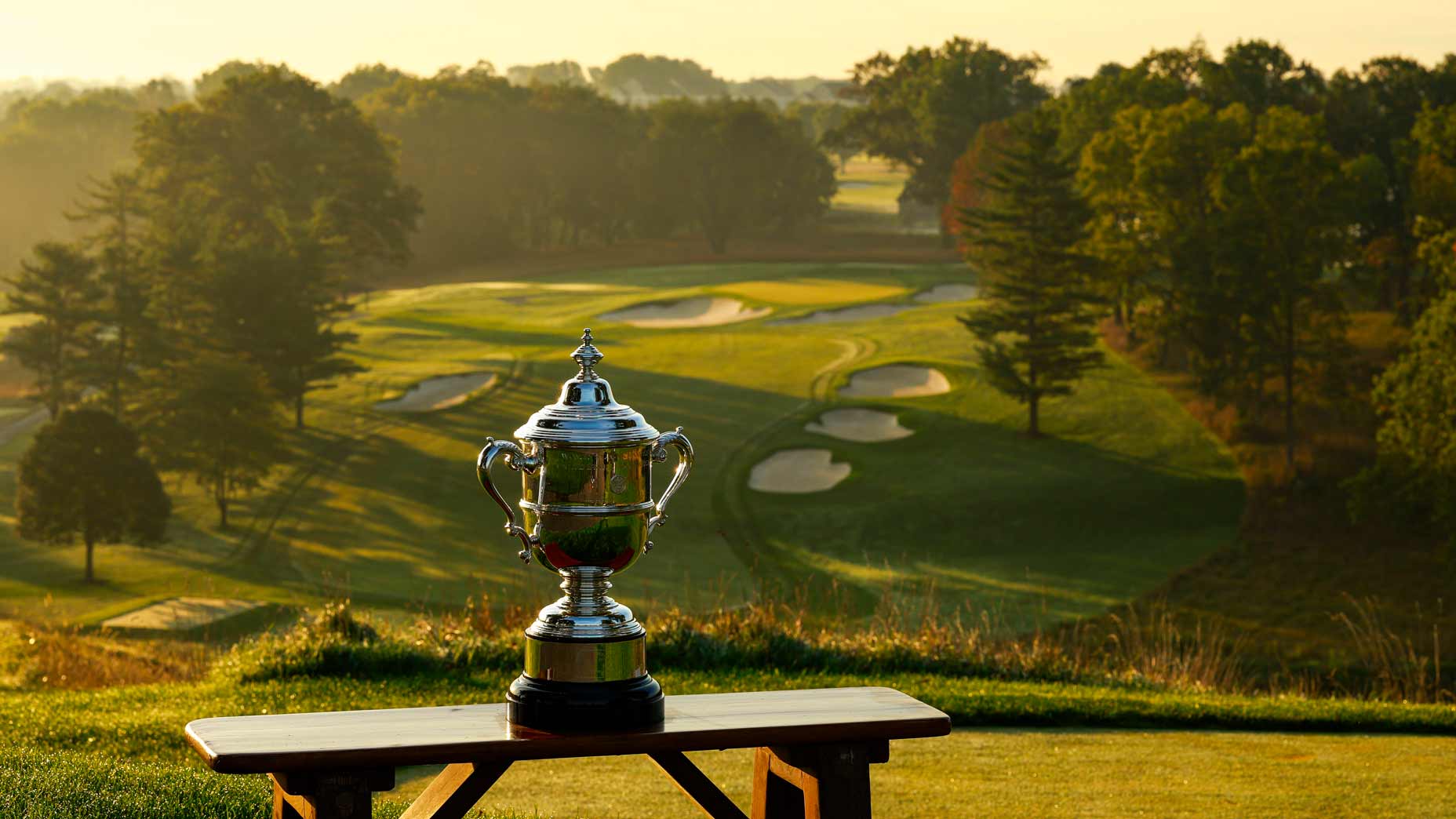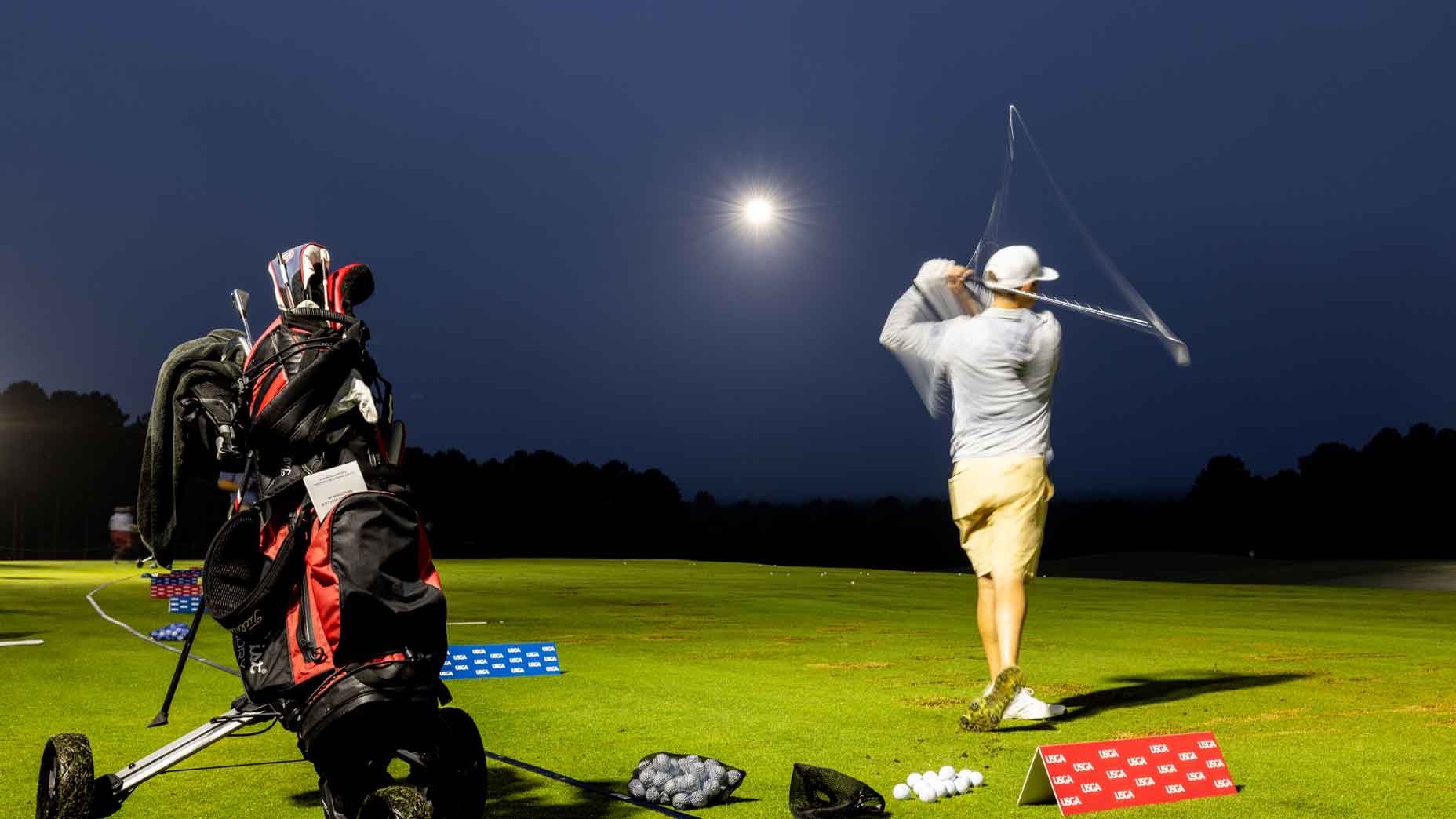Their two U.S. Women’s Opens were hits, now Lancaster Country Club wants more

Lancaster Country Club wants to become a home for women's championship golf.
USGA/Jason E. Miczek
The list of future venues for the U.S. Women’s Open is stacked, but there is currently a glaring omission.
All week at the U.S. Women’s Open, signs lining the 1st fairway displayed the winners and previous venues of championships in the past decade-plus. As you walked around the chipping green and in through the main fan entrance off the 10th fairway, those pathways were lined with displays of the U.S. Women’s Open’s future venues.
It’s clear there’s been a massive shift.
Over the past 20 years, the U.S. Women’s Open has visited just four courses (Pebble Beach, Pinehurst No. 2, Oakmont and Olympic) that are staples of the present-day rota for the men’s U.S. Open. The winds have already started to change with Pebble hosting the best women in the world for the first time last year. Through the next 12 years, the venues lack not for prestige.
But missing from the schedule is last week’s host, Lancaster Country Club.
After a thrilling finish and setting attendance records at the 2015 U.S. Women’s Open, the first USGA championship held at the 1920 William Flynn design set in the heart of Pennsylvania Dutch country, the track delivered again last week, producing the hardest U.S. Open test in a decade and a worthy champion in now-two-time U.S. Women’s Open winner Yuka Saso.
Last week’s event was the most attended U.S. Women’s Open since 2015, beating tournament officials’ expectations and scoring a 4.83 out of 5 for fan satisfaction, the highest since the USGA began tracking data, according to a USGA spokesperson.
The spokesperson also said the tournament tied for its best hospitality sales of any U.S. Women’s Open and was the best year ever for U.S. Women’s Open merchandise sales.
“When people talk about Lancaster, they say, man, that’s a hidden gem,” said USGA CEO Mike Whan at the trophy presentation. “Well, you ain’t hidden anymore. You are a gem.”
It is clear, not only can Lancaster’s course test the best players in the game, but that the community provides the thrilling atmosphere needed to sustain elite championship golf.
So while Lancaster’s next potential opportunity to host the most prestigious event in the women’s game can’t come until at least 2037, the club can and should be part of the championship rotation for years to come afterward. Earlier in the week, Whan said discussions for future events were ongoing and it was a “safe bet” there will be future USGA events at Lancaster.
After the success of the 2015 Women’s Open, the club wasn’t awarded this year’s event until 2018. However, the USGA has been building out its U.S. Open schedules for both men and women well in advance, with the latest currently scheduled for 2048.
But the club has grander plans than just more U.S. Women’s Opens, and I don’t mean hosting men’s U.S. Opens or men’s U.S. Amateurs.
“We have made a very deliberate decision to hold ourselves out as a home for the women’s game at the championship level,” Lancaster Country Club board member and Greens Chair Rory Connaughton told GOLF in an interview Tuesday. “Whether that’s amateurs or professionals, juniors or seniors or mid-amateurs, we see ourselves as a unique place in the game in that regard.”
At just a skosh under 6,950 yards from the tips, Lancaster isn’t long enough to host today’s longest hitters in the men’s U.S. Opens, or U.S. Amateurs, or even U.S. Juniors. It plays longer than the card, owing to its par 70 and many uphill approach shots, but even the Women’s Open had many par-4 tee boxes tipped out last week.
Connaughton, who has been a member of the club for nearly three decades, said there was an opportunity years ago for LCC to build heritage like its fellow Pennsylvania clubs Oakmont and Merion, which have hosted the most and sixth-most men’s U.S. Opens, respectively, but it was passed on.
Now that the pool of courses that can host those men’s events has shrunk, it likely will never have that chance again.
“We’re not ever going to compete with the men’s championships hosted by Oakmont or hosted by Merion in Pennsylvania or, or by any of the other great clubs that are on the shortlist,” he said. And that’s OK with him and the club.
Lancaster’s location also presents a unique opportunity. While the city itself was just shy of 60,000 residents as of 2018, the metropolitan area is more than a half million people. The adjacent metro of Harrisburg-Carlisle has nearly 600,000 residents. Within an hour-and-a-half’s drive, you have the majority of the 7.366 million in the Philadelphia metro area. Double that drive, New York City, Baltimore and Washington D.C. are all within a reasonable day trip.
Then there’s Lancaster itself, which has no major professional sports team, or even minor league baseball. But the area has become devoted to women’s sports, Connaughton says. High school field hockey and girl’s lacrosse games draw thousands of fans and Lancaster County has been home to top national high school teams in field hockey.
When the Women’s Open comes to Lancaster, it’s the “only game in town,” which Connaughton thinks is a big reason for the attendance records and why the community supports the event so well.
He lauded the list of clubs tied to the U.S. Women’s Open for the next 12 years, past men’s U.S. Open venues hosting the women’s equivalent for the first time such as Merion, Riviera, Oakland Hills, Los Angeles Country Club, Chicago Golf Club, Shinnecock and the Country Club later in 2045.
“They don’t need to prove anything to anybody,” Connaughton said. “And by opening themselves up to the women’s game, they’re elevating the women’s game in one respect. And I think they’re elevating themselves in another.”
But he doesn’t see Lancaster’s desire for more women’s championships as a way of going in the opposite direction.
“For us, it’s not a vehicle to the men’s game,” he said. “We don’t have that heritage, but we do have a golf course. We do have a market. We do have a club that embraces this.”
Before last week’s event, the membership had been playing the course off mats since October and closed it completely on May 13, two weeks before the championship.
In fact, Connaughton revealed that when the USGA initially approached the club with hosting an event around 2007 and ’08, the initial options included a Boy’s U.S. Junior Amateur. But the club pressed for more and eventually landed the 2015 U.S. Women’s Open.
Now the club’s path in women’s championship golf is set.
“Speaking personally, I would love to see a day when every women’s champion in the USGA portfolio of national events is standing on our 18th green with their trophy in hand,” Connaughton envisioned. “With a headline above them that says, ‘Welcome Home.'”













